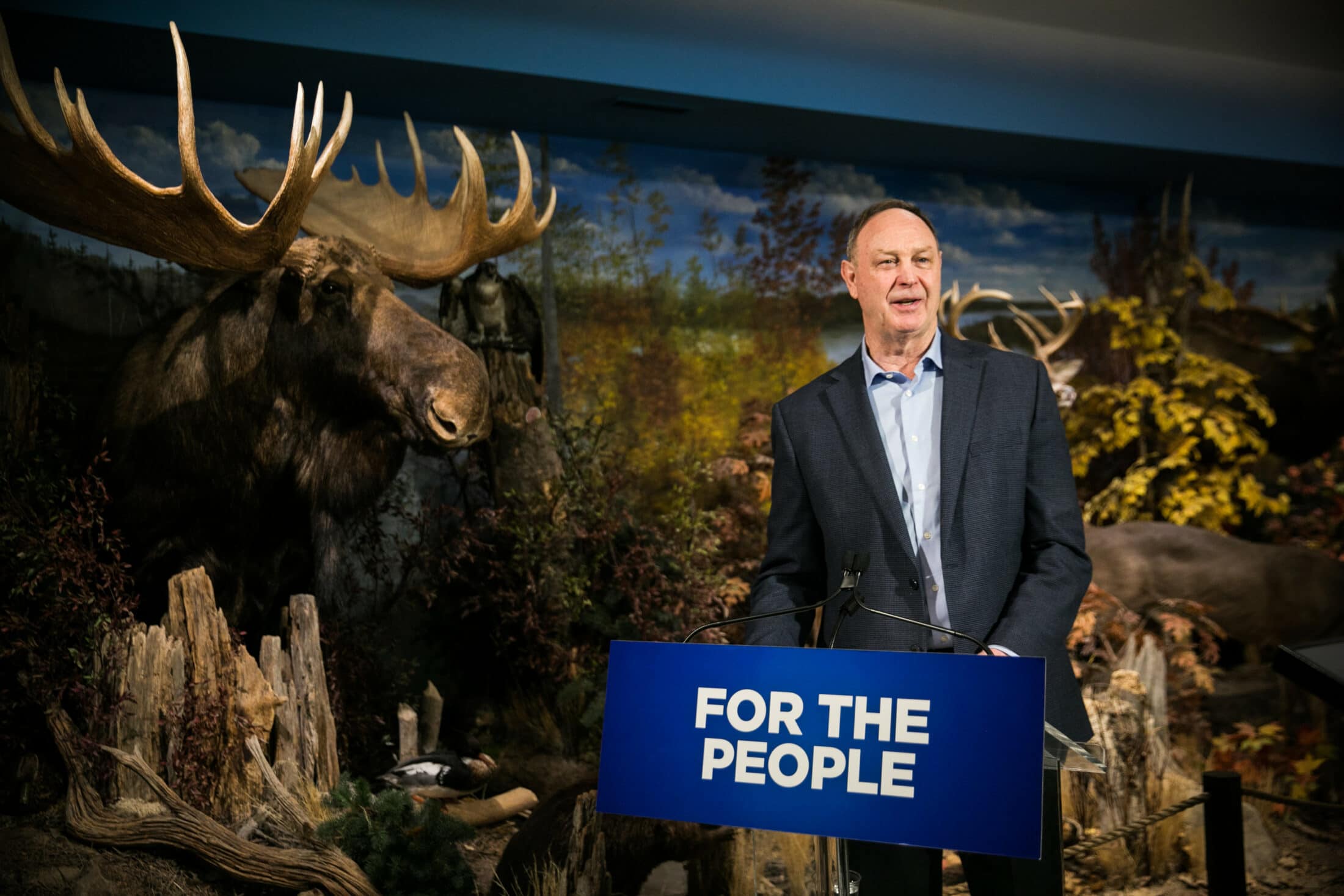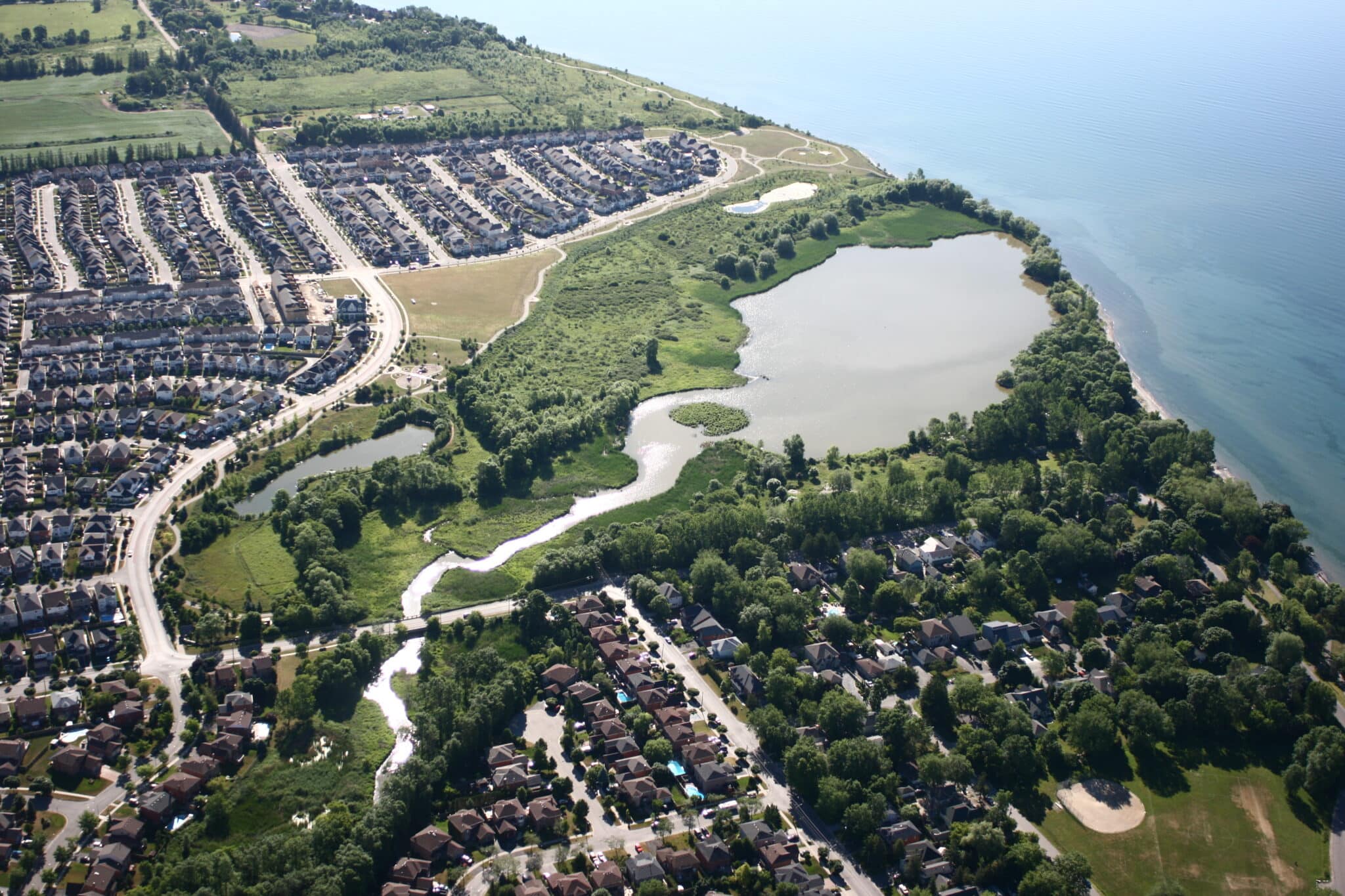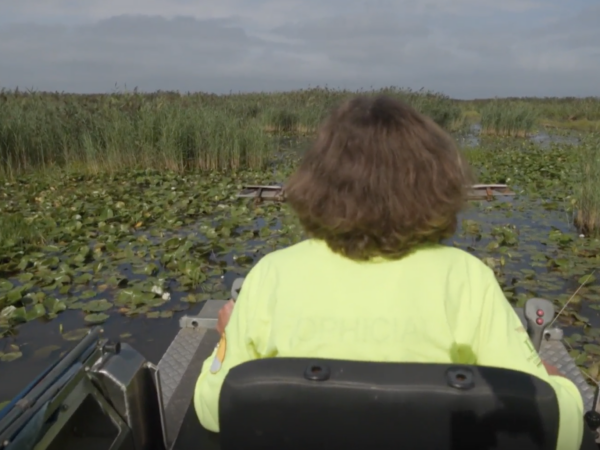
By Emma McIntosh, The Narwhal
This story first ran on The Narwhal, a non-profit news organization that publishes in-depth stories about Canada’s natural world.
From warming water to shifting growing seasons, Ontario is already seeing the effects of climate change. But for the most part, Doug Ford and his government say, the province’s natural resources are doing just fine.
In a report the government had declined to make public until The Narwhal requested it through freedom of information legislation, the province concluded that Ontario’s forests, fisheries and biodiversity are “in a healthy and productive state.” And, it takes care to note, extractive industries are producing significant wealth.
But that sunny assessment isn’t a complete picture. A closer read of the document, titled “The State of Ontario’s Natural Resources,” may explain why the government previously planned to keep it private.
Much of it shows that elements of the natural environment have been deeply damaged by the same activities that have built local economies. The impact of this is concentrated in the region the Ford government most wants to develop: southern Ontario, where it has accelerated highways, fast-tracked residential projects using special orders and has promised to increase housing supply.
“It’d be wrong to accept the ministry’s rosy description of what this report has to say,” said Phil Pothen, the Ontario programs manager at the non-profit Environmental Defence.
The Ministry of Northern Development, Mines, Natural Resources and Forestry didn’t directly answer when asked why it didn’t release the report sooner, but noted that portions of it have already been published in other documents.
Here’s a breakdown of the report’s biggest findings — and how its environmental observations clash with some of the Ford government’s major economic development goals.
Why did The Narwhal have to use freedom of information legislation to see this report?
Staff in the Ministry of Northern Development, Mines, Natural Resources and Forestry have been working on the report since 2017, before Ford was elected. It was meant to pull data on many of Ontario’s vast resources into a one-stop-shop that would be easy for the public to understand, with a plan to release it alongside an interactive website in 2020. But that never happened.
In November 2021, the province’s auditor general found that former Progressive Conservative natural resources minister John Yakabuski declined to make a decision in 2020 when ministry staff asked for the go-ahead to hit publish.
“The ministry could not provide our office with an explanation why,” the auditor’s report read. “The ministry told us it … has no plans to share the prepared website or indicator reports with the public without ministerial approval to do so.”
Days after the auditor general’s findings came out, The Narwhal filed a freedom of information request for the report. In response, the ministry reversed course and agreed to post it publicly. It went online March 11.
The report isn’t as complete a look at what the ministry does as originally promised. The auditor general found that ministry staff had planned to publish data about 65 aspects of the environment and natural resource development that they looked into, which the report calls “indicators.” The document includes 48. The auditor also mentioned categories that didn’t make it into the final version: rare ecosystems and wildlife populations, for example. The ministry said the “exact list of indicators has changed since 2018,” but that staff do plan to update the report and release more information as they process new data.
Of the 48 indicators included, the government rated the overall status of 22 as good, seven as fair, 11 as mixed and six as needing improvement. (Another two — aggregate mining and oil and gas extraction — received a different rating of “active.”)
That statistic seems positive, but it’s important to note that many of the indicators are focused on the wealth generated by natural resources — not the health of the environment.
That’s because the Ministry of Northern Development, Mines, Natural Resources and Forestry has a conflicted mandate, Pothen said. Although it’s tasked with some aspects of environmental protection, it’s also responsible for supporting and regulating extractive industries.
“It doesn’t reflect what you call success in environmental protection,” Pothen said. “It focuses on, you know, values that are of utility to people.”
In an email, ministry spokesperson Morgan Kerekes said the report is meant to track not just how healthy natural resources are, but how well Ontario is managing them.
“Assessing the state of these resources is necessary to ensure these benefits are sustainable for future generations,” Kerekes said.

Carruthers Creek is seen from above as it winds through Ajax, Ont., to drain into Lake Ontario. The southern Ontario watershed is one of many in the region that are under pressure from human development. Photo: Toronto and Region Conservation Authority
Wetlands and wildlife in southern Ontario are under stress, yet Ford is pushing hard for more development
Though the report’s findings span the province, its conclusions about population-heavy southern Ontario are among the most troubling.
Two-thirds of the wetlands that once existed in southern Ontario are gone, for example, and decline is speeding up for those that are left. Between 2011 and 2015, 7,303 hectares of southern Ontario wetlands were lost, an area four times the size of Toronto Pearson International Airport. The data ends in 2015, which means it doesn’t capture what has happened in the seven years since. (The next update on that data will cover 2015 to 2020, and will be published in 2025, the ministry said.)
These findings seem stark, but the status applied is a mild “needs improvement.”
Wetlands have been a contentious topic for the Ford government. At times, it has used special orders to give the green light to development that would pave over them, in one case rescinding such an order due to public backlash. It also took powers away from conservation authorities, which oversee watersheds that in many cases include key wetlands (the province’s relationship with conservation authorities seems to have been somewhat mended since).
“The admissions on wetlands which are here in this report… would have been very awkward to release at a time when they were introducing changes to the Conservation Authorities Act that were designed to facilitate the destruction of wetlands,” Pothen said.
Human activity — the construction of roads and urban areas in particular — has also broken up ecosystems in southern Ontario into increasingly small pieces. That’s a problem because it makes it hard for species to move in order to eat, reproduce or adapt to climate change. The Greater Toronto Area, the southeastern shores of Lake Huron and most of southwestern Ontario have a “high degree of fragmentation,” the report found.
Invasive species, too, present an enormous problem. The report concluded that nearly all lakes in southern Ontario had one or more aquatic invasive species, which can displace native species and hurt the ecosystems we rely on. Invasive plants like garlic mustard — which can stop tree seeds from germinating and threatens the survival of a rare type of butterfly, the West Virginia white — are also “most often found” in southern Ontario, the report showed.
The ministry also looked at “aquatic stress,” a measure of how much human activity such as residences, recreation, refineries, forestry operations, roads, industrial sites and agriculture is harming water-based habitats. Southern Ontario watersheds have the highest levels of aquatic stress, the report concluded, “suggesting that aquatic habitat loss and degradation is the highest in this part of the province.”
Aquatic ecosystems in the province as a whole had a “mixed” prognosis. Native fish populations were strong even in southern Ontario, but the balance between predators and prey is “more disturbed” in southern Ontario, the report concluded. And although the ministry concluded water quality in Ontario is fair overall, most of the pollutants recorded at levels above provincial thresholds were measured in southwestern Ontario.
At the same time, major planks of the Progressive Conservatives’ re-election strategy revolve around accelerating development in the very region the report shows is already under the most pressure. The government has fast-tracked all kinds of development through special land zoning orders, and is seeking to build two controversial highways through the protected Ontario Greenbelt. Those things are increasingly difficult to justify when the government’s own data shows the environment there is already struggling, Pothen said.
“I think you have to say it’s a negative report when it comes to wildlife habitat in southern Ontario,” Pothen said.
If a tree falls in Ontario, does it make a sound?
The Ministry of Northern Development, Mines, Natural Resources and Forestry is responsible for some, but not all, of the forests in Ontario. Its focus is on forests on Crown land, the government name for public land that is not designated as parkland, and areas that are being logged (other forests fall to the Environment Ministry, or different levels of government).
Of the forests included in the report, the government concluded that things are mostly going well. Forests, such as Temagami and Algonquin, generally have a good diversity of tree types with a healthy range of ages. Audits show that wood harvesting is for the most part following the rules, and forest regeneration is keeping pace with logging.
But not everything is awesome. Deforestation in Ontario is on the rise, mostly driven by agriculture in the province’s southern regions, the report concludes. The net loss from 2008 to 2018 amounts to 0.05 per cent of Ontario’s overall forest cover, about 38,000 hectares, or roughly half the size of New York City.
Invasive species are hurting trees as well — the situation is “deteriorating” as pests such as the emerald ash borer spread, the report finds.
During the Ford government’s tenure, the Progressive Conservatives have come under fire for seeking to double Ontario’s wood production by 2030, an amount critics said isn’t sustainable. In pursuit of that goal, it also permanently exempted forestry companies from Ontario’s endangered species law.
Logging companies largely don’t clearcut entire huge swathes of trees anymore in Ontario and are required to replant areas where they harvest. But even the road-building often required for forestry or mining can contribute to deforestation. Elsewhere, the report notes that the ministry has jurisdiction over 35,298 kilometres of roads that aren’t fit for cars to drive on and aren’t being maintained.
Growing seasons and ice cover are shifting as the climate changes
The climate crisis is already reshaping the environment in Ontario, the report shows.
Climate change has caused a significant decline in ice cover on the Great Lakes. On average, data shows they have 20 per cent less lake ice than 50 years ago, with the decline hurting Lake Superior the most. The change can mess with the food chain in the ecosystem, as well as fish spawning and bird migration patterns. It makes the water warmer. It also leads to toxic algal blooms, and means winter storms can cause more waves that erode coastlines.
The increasing heat is also altering Ontario’s growing season, which is starting earlier and ending later. This affects agriculture, but also animals that eat plants in the wild. Hot spring days can disrupt the timing between animal activity and the supply of the food they rely on. “If these become out of sync, the productivity and survival of plants and animals may be threatened,” the report found.
Last November, the auditor general found that Ontario is falling far short of its climate goals and will achieve just a fifth of the emissions reductions the government promised. Environment Minister David Piccini has contested that, saying that the auditor’s findings don’t account for recent investments in emissions-reduction technologies and public transit.




